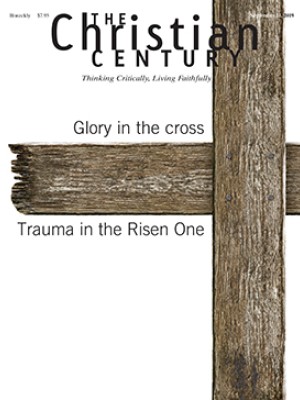Upstate New York camp was only US safe haven during Holocaust
Suzanne Krauthamer Gurwitz remembers little about the 18 months she spent at the Fort Ontario Emergency Refugee Center in Oswego, New York. She was five when she, her parents, and two older brothers arrived at the former military post near Lake Ontario.
“Like other children, I played,” said Gurwitz, 80, of Plainview, New York. “I don’t remember being unhappy.”
Gurwitz was among 982 refugees at Fort Ontario, the only US shelter for Europeans fleeing World War II. Of the 30 surviving refugees, 19 attended a 75th anniversary reunion on August 5. The event commemorated the 1944 arrival of refugees in the small upstate New York city.
Read our latest issue or browse back issues.
Survivors and their families crowded into the Safe Haven Holocaust Refugee Shelter Museum, once the shelter’s administration building, and wandered the Fort Ontario State Historic Site. More than 200 people attended a memorial under heightened security. Some guests expressed concern for their safety, an official said, citing recent mass shootings in El Paso, Texas, and Dayton, Ohio.
Several former refugees and Oswego residents didn’t want to talk about those worries or about the Trump administration’s policies barring asylum seekers. Instead, the former refugees were eager to talk about how they came to live at the shelter.
Gurwitz, born in Paris to Polish Jews, remembers crossing the Alps and hiding in the woods before her family ended up living with nuns and priests in Rome in 1943. In June 1944, her father learned a ship would soon leave Naples, Italy, for a shelter in the United States. By then, the Nazis had killed about 5 million European Jews.
On June 6, 1944, Allied forces attacked German forces on France’s Normandy coast. Three days later, President Franklin D. Roosevelt announced a refugee camp would open in six weeks at Fort Ontario.
The refugees came to the United States as Roosevelt’s “guests” and agreed to return to Europe after the war. President Harry S. Truman in December 1945 signed an executive order that allowed the refugees to enter the US, and the shelter closed in February 1946.
The refugees from 18 countries shared “loss, trauma, and a path that somehow got them to southern Italy,” said Rebecca Erbelding, curator and historian at the US Holocaust Memorial Museum in Washington.
US immigration policies kept most Jewish refugees out of America, she said.
“Isolationism, economic concerns, racism, and anti-Semitism all led most Americans to focus on domestic problems rather than international ones,” she wrote for the Holocaust museum. “Reflecting the mood and situation of the country, State Department officers interpreted America’s restrictive immigration laws even more stringently, leaving the quotas far from filled.”
The refugees boarded the USAT Henry Gibbins in Naples on July 21, 1944. About two weeks later, they arrived in New York harbor, then traveled by train to Oswego.
They were greeted on arrival by military police and a chain-link fence topped with barbed wire, conditions many refugees found troubling. Despite restrictions—a 30-day quarantine, curfews, passes, and less than luxurious conditions in the former army barracks—the former refugees described positive experiences and friendly interactions with city residents.
“It was an adventure for us,” said Simon Kalderon, a native of Bosnia-Herzegovina, who was nine when he arrived. “I never felt that I was different.”
Linda Cohen’s parents, Leon and Seri Kabiljo of Yugoslavia, dreamed of living in the United States. “This camp saved their life,” she said.
Rep. John Katko (R., N.Y.) called the refugee shelter “a beacon of sanity in a world of insanity” and pledged to push for its recognition as a national park. In October 2018, President Trump signed the Fort Ontario Study Act, a step toward that designation.
Before Roosevelt created the shelter, refugees fleeing the Holocaust were sent back, said Katko.
“The State Department would send these ships back over to Europe and (refugees) would go back and meet their fate,” Katko told the crowd gathered for the anniversary. “They kept sending them back. Can you imagine that happening today?”
“Yeah,” and “Yes, we can,” many in the crowd of more than 200 yelled.
Suzanne Gurwitz’s grandson said that the anti-Semitism and nationalism that fueled the Holocaust parallels hatred for asylum seekers at the US southern border.
“This is what happened to our ancestors,” said Daniel Albert, a rabbinical student at Yeshiva University. “They closed the borders and didn’t let us in.” —Religion News Service






